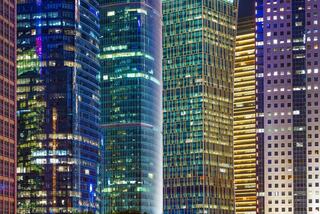
Brian Busse, head of the firm's Asia practice, recently sat down with more than a dozen business leaders from fashion and luxury brands in Shanghai to gain a first-hand account of the consumer mindset and business climate.
Learning to live with uncertainty:
The streets of Shanghai are bustling, exuding a sense of cheerfulness. However, the resumption of spending for many brands remains uncertain. Consumer spending patterns have shifted, with people now opting to spend on select items that hold significant meaning, favoring personalized and meaningful purchases. Concurrently, savings rates have risen from approximately 22% before the Covid-19 pandemic to around 32% currently (according to sources).
Various factors such as the 2022 Covid trauma, tech layoffs (Alibaba), the Ukraine war, US/China relations tension, real estate prices, and youth unemployment have fostered a greater sense of caution about the future. Unlike the cyclical economic downturns experienced by the US and Europe every 7-8 years, China has enjoyed continuous high growth since the 1990s, making people now somewhat apprehensive about the future. Adjusting to this new normal will require time, as people learn that life goes on even amidst uncertainty and that they can still spend and weather economic fluctuations.
Luxury spending consolidation:
Larger brands are thriving, while many smaller ones are struggling. In the top shopping malls of Mainland China, the combined sales percentage of the "Big 6" luxury brands (Louis Vuitton, Chanel, Hermes, Dior, Gucci, and Cartier) has increased from around 46% before the pandemic to approximately 60% at present (according to sources).
Gradual travel recovery:
The recovery of international travel can be described as gradual. Reduced flight volume and higher prices, as well as queues for passport renewal and visa applications, have hindered a swift rebound. Popular destinations like Paris, Milan, London, and New York City are not expected to see significant volume until 2024.
Rising youth unemployment:
An estimated 45 million individuals aged 20-30 are currently unemployed, representing an unemployment rate of approximately 18% within this demographic. Additionally, a record 11.58 million university graduates are expected to enter the job market this year. Many brands are selectively hiring candidates with work experience, leaving fresh graduates and their families uncertain about the future. While the extent of the problem may be exaggerated due to the younger generation's preference for specific job opportunities, it should not be disregarded.
World-class livability:
Shanghai boasts a world-class atmosphere, characterized by modernity and a high standard of living. It can compete with other regional global metropolises. The cityscape showcases newly constructed buildings, a rich cultural scene, well-developed infrastructure, and impressive technological advancements (although these may pose challenges for non-local tourists without Chinese bank accounts or knowledge of the language). Notably, Shanghai alone is now home to over 1,000 Starbucks locations.
China is still the next China:
A disconnect appears to exist between the positive growth messages conveyed by headquarters and the reality on the ground. The recovery trajectory in China is unlikely to resemble a sharp "V" shape; rather, it will require a wait-and-see approach. Many brand teams are maintaining stability but implementing hiring freezes. Although the short-term outlook may be uncertain, the long-term perspective remains optimistic. With the rising middle class, the next China is still China as they say, although it just may take a little longer than initially anticipated to fully materialize.